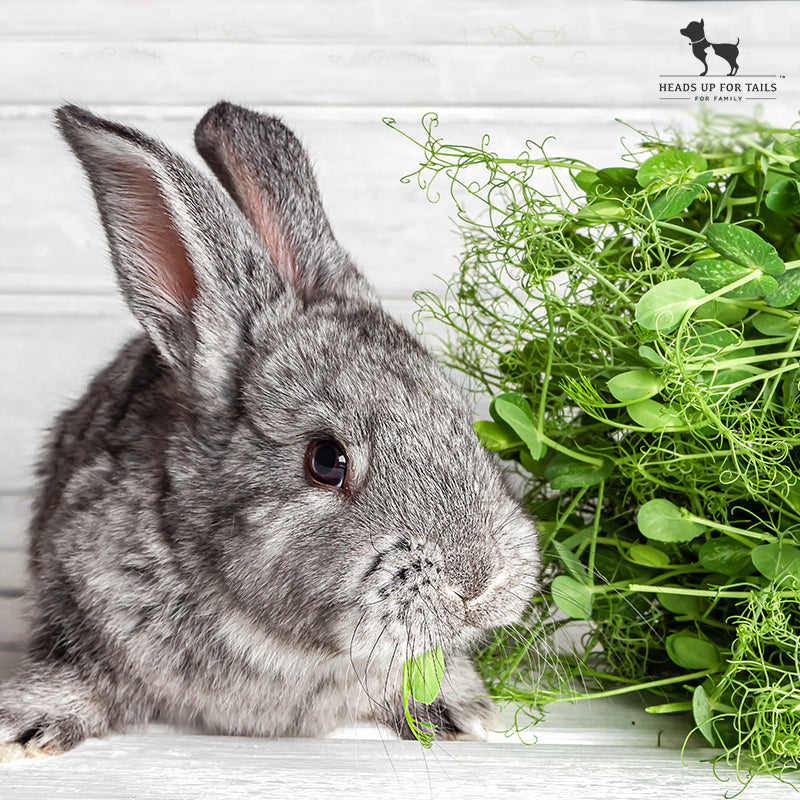
Rabbits are a popular choice of pets throughout the world. However, before bringing home a pet, it is best to know all about their care and maintenance. This approach makes the process stress-free for you and your pet. It helps prevent various issues caused by inadequate information and poor management.
When you get any animal, it is best to give them a few days to explore the new place and settle in. Exposing them to a new environment can be overwhelming and stressful for them. We are here to tell you all about caring for your new pet rabbit and giving them a healthy and happy life of comfort.

Once your pet rabbit accustoms itself to the new setting, you can begin handling them. Encourage your rabbit with treats and handle them with care to make it a comfortable and positive interaction.
When picking your bunny up, make sure to support their hind legs. They have a fragile backbone that can easily fracture if they give a strong kick using their hind legs. Never pick your pet up by their tail or ears.
You can always hold the loose skin of their scruff to put one hand under their chest, then support their hind legs with your other hand and lift them. Don’t lift them too high off the floor. If they escape your hold, falling from a height can cause injury.

Rabbits can be housed in a hutch or be free-roaming. If they are free-roaming, make sure the area is rabbit-proofed and guarded. Leave no object that can harm them lying around. You must also protect them from extreme weather and predators.
The hutch is a more preferred method of housing your rabbit. It must be of a height that allows your pet rabbit to stand on its hind legs without touching its roof. The hutch should be well ventilated, made of indestructible material, and easy to clean. Do not place it in damp and dark areas, as it can lead to respiratory distress for rabbits.
You can use straws, paper shavings, or pellet litter as bedding materials for the hutch. Make sure to change the bedding material weekly. Do not use litter material meant for cats; they are clumpy and may cause serious troubles if your rabbit ingests them.
Provide a litter box in their hutch. Encourage your pet rabbit to use the box for excretion by adding some hay and their droppings to it. Placing the litter box where they commonly pass urine and stool can also help in litter training.
Equip the hutch with resting or hiding areas in the form of a box filled with hay, a straw basket, or a cardboard box with an entrance hole. This area is for times when they need to feel safe or prefer being alone.

Rabbits need exercise to stay fit and healthy. If the hutch is not big enough for them to exercise, you can let them out into a larger place that is safe to run, jump and play for a few hours every day. This strategy will keep them mentally, physically stimulated, and fit.
There are exercise pens available in the market and online, in case free-roaming rabbits in the house is not an option. You should offer your rabbit toys, dry branches, or wooden chew toys to keep them mentally stimulated and busy.
Before introducing anything into your rabbit’s hutch, make sure it is safe for them. You can also hide treats in their toys to encourage foraging behavior. This trick is a good form of enrichment for your pet.

Rabbits live on a herbivore diet that comprises large amounts of grass, fruits, flowers, and leaves. Grasses like timothy hay, oat rye, and barley make an important part of rabbit food. Such foods must be available to them at all times. You can also feed them commercial pellets in small amounts along with hay.
You can occasionally let them eat leguminous hays like alfalfa and clover. However, they must not be a part of your rabbit’s daily diet, as they are high in calories and protein. You must also feed them kale, broccoli, lettuce, parsley, and brussels sprouts. Greens provide more nutrients and water to compensate for their lack of water consumption.
Give them fruits as treats. Fruits safe for rabbits are berries, mango, peaches, pineapple, and apple. You can also give them dried fruits. But make sure the portion is tiny, as they have concentrated nutrients. Avoid feeding bananas and grapes.
Provide fresh drinking water at all times. Vitamin and mineral supplementation is not needed if your rabbit is healthy. Do not feed chocolate, spicy and oily foods, or food with high starch and fat content.
We hope we have covered all the basic aspects of Rabbit care and management. Click here for more information.